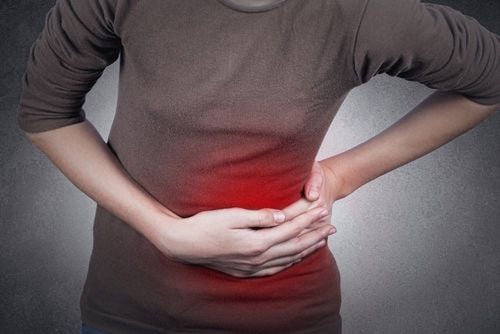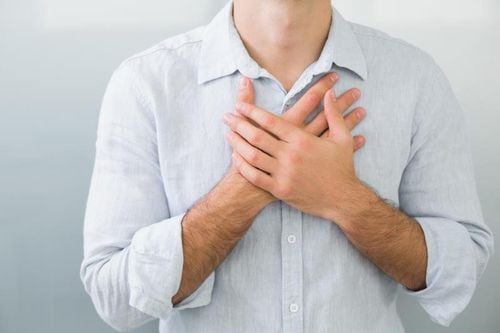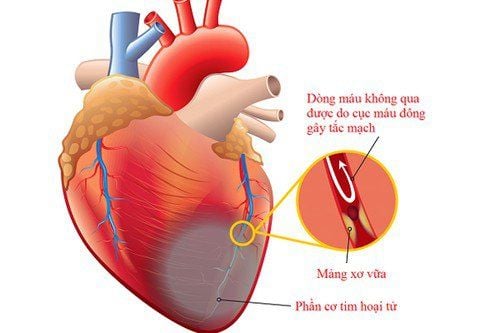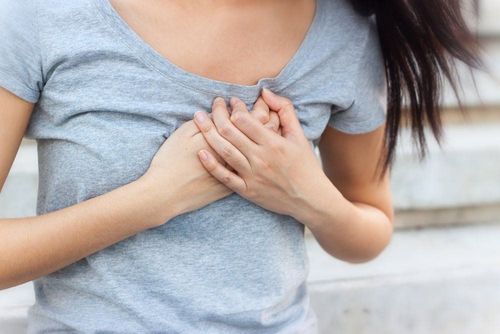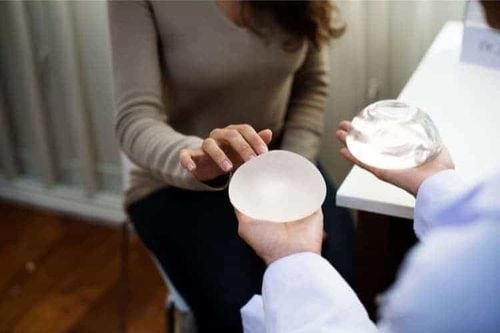This is an automatically translated article.
The rehabilitation treatment before and after breast surgery plays a very important role in the patient's health recovery, helping the patient to return to normal activities soon.
1. Importance of rehabilitation before and after breast surgery
1.1 What is breast surgery? Thoracic surgery is a surgical method to open and brake the chest to treat pathologies in the lungs and pleura (pleurectomy, lobectomy,...). Thoracic surgery does not include surgery of the heart valves or the great vessels of the mediastinum.
In thoracic surgery, there are two commonly used incisions: the midsternal incision and the posterior thoracic incision. The posterior lateral incision often requires cutting some chest wall muscles such as the internal intercostal muscles, the external intercostal muscles, the broad back muscles,...
1.2 Why should early rehabilitation interventions be performed? After surgery, patients need to be monitored for cardiopulmonary resuscitation, connected to a monitor to monitor vital signs, intravenous lines, chest drains, urinary catheters,... These are limiting factors. respiratory function and motor function of the patient. In addition, the state of incision pain, decreased respiratory volume also increase the risk of complications of pneumonia, atelectasis. In particular, there are some dangerous complications that can occur in the postoperative period such as pulmonary embolism, deep vein thrombosis.
Early intervention to restore function after surgery helps patients avoid the above complications, helping them to better recover their respiratory and motor functions. In addition, the preparation of the patient before surgery also needs to be done well so that the post-operative rehabilitation process goes smoothly, bringing the highest efficiency.
2. Diagnosis and medical examination before and after breast surgery
2.1 Ask the patient The doctor will ask the patient related questions such as:
Reason for admission: Are there symptoms of chest pain, shortness of breath, coughing up blood,...; History: Time of first symptom onset, symptom nature, previous diagnosis and treatment, disease progression, current status,...; History: History of previous respiratory and cardiovascular disease, history of smoking, history of surgery or chest trauma, history of blood clotting disorders,... 2.2 Preoperative examination
Assessment of status disease status, function of organ systems in the body; Assessment of respiratory function: Measuring respiratory function by machine or 6-minute walking test and Borg scale; Assess nutritional status, pain, comorbidities; Assess for cardiac disease if present; Assess the patient's psychological function before surgery.

Người bệnh được thăm khám trước khi phẫu thuật ngực
Evaluation of the incision: Location, size, pain level, bleeding, infection, healing process; Respiratory system examination: Breathing rate, respiratory rate, secretion status, respiratory infection status, cough ability,...; Monitor and take care of chest drains; Reassess respiratory function; Re-evaluate disease symptoms, compare with the time before surgery; Evaluation of pain in other parts of the body due to prolonged immobilization after surgery; Comprehensive assessment for early detection of possible complications such as pulmonary artery infarction, deep vein thrombosis,...; Re-evaluate the patient's psychological function; Assess the patient's functional independence. 2.3 Clinical tests Hematology and blood chemistry tests; Electrocardiogram and echocardiography; Diagnostic imaging: chest X-ray, chest MRI or chest CT-scan; These tests can be performed after surgery to monitor and evaluate after surgery. From the results obtained through the process of asking the patient, the clinical symptoms and the paraclinical results, the doctor diagnosed the patient's preoperative pathology. After surgery, the patient is also examined to determine the disease status and possible complications.
3. Rehabilitation exercises before and after breast surgery
3.1 Principles of rehabilitation intervention both before and after surgery; Exercise early after surgery to minimize secondary injuries that may occur due to lying motionless in bed for too long; Priority should be given to performing respiratory rehabilitation exercises because after anesthesia, the impact of wound pain and lying for a long time, patients often breathe shallowly and have a lot of secretions stagnation; Pain control and positive psychological support for patients; Close cooperation between the patient, the doctor and the patient's family. 3.2 Rehabilitation before surgery Accurately diagnose the disease that the patient is suffering from; Well control the symptoms of the disease to stabilize the condition before surgery; Psychotherapy: The doctor needs to clearly explain to the patient about the patient's condition, surgical methods, symptoms and possible complications after surgery, to help the patient feel secure and in good spirits before surgery. surgery; Instruct the patient to perform breathing exercises, exercise active movement according to joint range of motion; Assess respiratory function to know the patient's condition before surgery and estimate the intensity of exercise after surgery accordingly; Instruct and clearly explain the rehabilitation program after surgery and the exercises that the patient should perform after surgery.
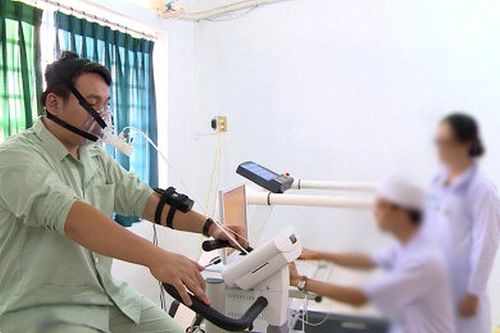
Người bệnh cần được lđánh giá chức năng hô hấp trước phẫu thuật ngực
3.3 Rehabilitation after surgery Care and monitor the pleural drainage by: Preventing blockage of the drainage tube and making sure the tip of the glass tube is submerged in water (avoiding air from entering the pleura);
Mobilize and move early in the first days after surgery, even while being treated in the intensive care unit:
Instruct the patient to perform functional movement in bed. The patient should get up early, starting by leaning against the wall or bed, then sitting close to the edge of the bed, letting go of the legs; Transition from sitting from bed to sitting in a chair by the bed; Practice walking around the bed, around the room, going to the toilet by yourself as soon as possible; Gradually increase the distance traveled by yourself in the following days; Instruct the patient to perform movement exercises of the upper limbs, lower limbs and torso in lying, sitting, and standing positions by the bed. These exercises help patients regain muscle strength, increase endurance, oxygen tolerance level, prevent complications due to post-operative immobility;
Rehabilitation of respiratory function after surgery:
Practice breathing slowly and deeply. Breathing patterns used to increase pulmonary ventilation include pursed-lip breathing, diaphragmatic breathing, and spirometer breathing; Effective cough exercises to expel stagnant secretions. When coughing, the patient should put his hand or pillow on the incision area to relieve pain; Practice hand movements to increase the size of the chest when breathing; Encourage the patient to perform personal activities such as eating, changing clothes, going to the toilet;
Psychological treatment of patients during rehabilitation.
The doctor also needs to guide the patient after chest surgery to perform exercises at home to improve respiratory function. Patients need to be periodically re-examined to re-evaluate respiratory function, can change the exercise program if necessary.
Currently, patients after chest surgery can go to the Department of Rehabilitation - Vinmec International General Hospital for physical therapy and rehabilitation. The faculty has the strength of rehabilitation for patients after orthopedic trauma surgery, cardiac - thoracic surgery, stroke and pediatric respiratory rehabilitation.... In particular, Vinmec owns The team of doctors has specialized in Rehabilitation with many years of experience and dedication to patients. The subdivisions such as: medical examination area, physical therapy area, movement therapy area, ... are spaciously designed, equipped with many modern equipments, bringing a comfortable feeling for patients to collect. get the best treatment results. At the same time, the Department of Rehabilitation is also equipped with a system of therapeutic machinery from leading countries in technology such as the Netherlands, Japan, etc., which will bring satisfaction to customers to use. services of Vinmec.
Please dial HOTLINE for more information or register for an appointment HERE. Download MyVinmec app to make appointments faster and to manage your bookings easily.





